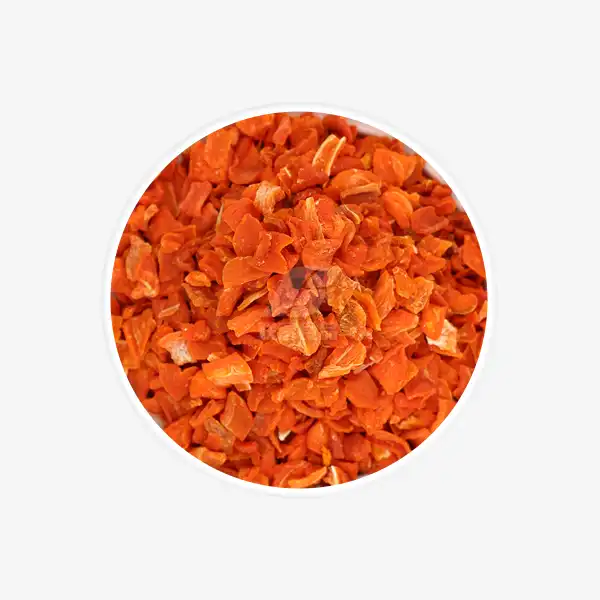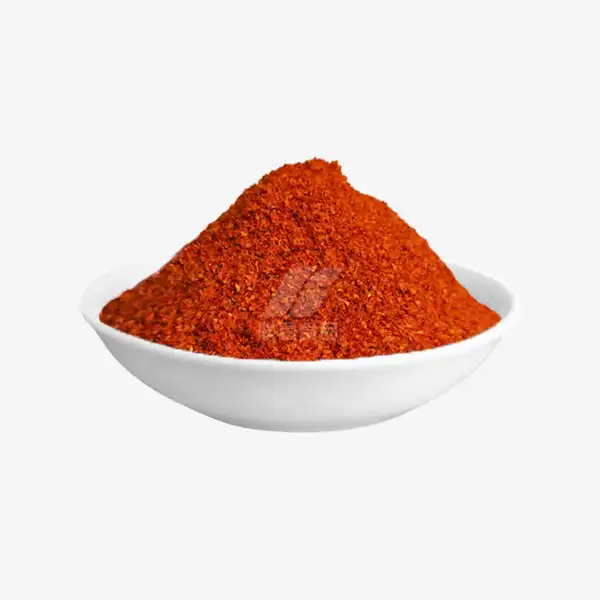How can I tell if dehydrated garlic slices is bad?
Dehydrated garlic slices are a convenient and shelf-stable way to add garlicky flavor to your cooking. However, like any food product, they can eventually go bad if not stored properly or kept for too long. Knowing how to identify spoiled dehydrated garlic is important for food safety and to ensure you're using a quality ingredient in your dishes. This guide will walk you through the signs of spoilage, proper storage methods, and tips to extend the shelf life of your dehydrated garlic slices.
Signs to Identify Spoiled Dehydrated Garlic Slices
While dehydrated garlic has a long shelf life compared to fresh garlic, it can still deteriorate over time. Here are the key indicators that your dehydrated garlic slices may have gone bad:
Visual Cues
One of the easiest ways to check if your dehydrated garlic is still good is by visually inspecting it. Look out for these signs:
- Discoloration: Fresh dehydrated garlic slices should have a pale ivory to light golden color. If you notice any dark brown or black spots, or if the overall color has significantly darkened, it may indicate spoilage.
- Mold growth: Any visible mold, which can appear as fuzzy green, blue, or white spots, is a clear sign that the garlic has gone bad and should be discarded immediately.
- Clumping: If your garlic slices have absorbed moisture, they may stick together in clumps. This can create an environment conducive to bacterial growth.
- Texture changes: Properly dehydrated garlic should be crisp and brittle. If the slices feel soft, rubbery, or have an oily texture, they may have started to degrade.
Olfactory Indicators
Your nose can be a powerful tool in detecting spoilage. Pay attention to these scent-related signs:
- Off odors: Dehydrated garlic should have a strong, characteristic garlic aroma. If you detect any musty, sour, or rancid smells, it's likely that the garlic has spoiled.
- Loss of scent: On the flip side, if your dehydrated garlic has lost its pungent aroma entirely, it may have oxidized and lost its flavor potency, even if it hasn't necessarily spoiled.
Taste Test (with caution)
While it's generally not recommended to taste food you suspect might be spoiled, if the visual and olfactory checks don't raise any red flags, you can cautiously taste a small amount:
- Flavor changes: Spoiled garlic may taste bitter, sour, or simply "off" compared to its normal flavor profile.
- Rancidity: A rancid taste, similar to old cooking oil, can indicate that the oils in the garlic have oxidized.
Remember, when in doubt, it's always safer to discard dehydrated garlic that you suspect may have gone bad rather than risk consuming spoiled food.
Proper Storage Tips for Dehydrated Garlic Slices
To maintain the quality and extend the shelf life of your dehydrated garlic slices, proper storage is crucial. Follow these guidelines to keep your garlic fresh and flavorful for as long as possible:
Choose the Right Container
The container you use to store your dehydrated garlic slices can significantly impact their longevity:
- Airtight containers: Use containers with tight-fitting lids to prevent moisture and air from entering. Mason jars, glass containers with rubber seals, or high-quality plastic containers with snap-on lids are all good options.
- Dark containers: If possible, opt for opaque or amber-colored containers to protect the garlic from light exposure, which can degrade its quality over time.
- Size matters: Choose a container that's appropriately sized for the amount of garlic you're storing. Less air space means less opportunity for oxidation.
Select the Ideal Storage Location
Where you keep your dehydrated garlic can affect its shelf life:
- Cool and dry place: A pantry or cupboard away from heat sources like the stove or dishwasher is ideal. Aim for a consistent temperature below 70°F (21°C).
- Avoid moisture-prone areas: Keep your garlic away from sinks, dishwashers, or areas prone to humidity, as moisture is the enemy of dehydrated foods.
- Refrigeration debate: While some sources suggest refrigerating dehydrated garlic, others warn against it due to potential moisture issues. If you choose to refrigerate, ensure your container is truly airtight and allow it to come to room temperature before opening to prevent condensation.
Handling and Usage Practices
How you handle your dehydrated garlic during use can impact its overall shelf life:
- Clean utensils: Always use clean, dry utensils when scooping out garlic slices to avoid introducing moisture or contaminants.
- Quick access: Open the container only when necessary and close it promptly to minimize exposure to air and potential moisture.
- Avoid cross-contamination: Don't use the same spoon or scoop that you've used for other ingredients, especially wet ones, when handling your dehydrated garlic.
Labeling and Rotation
Keeping track of your dehydrated garlic's age can help you use it before it deteriorates:
- Date labels: Mark your containers with the date of purchase or dehydration. This helps you keep track of how long you've had the garlic.
- First in, first out: Use older garlic before newer batches to ensure you're always using the freshest product possible.
- Bulk storage: If you have a large quantity, consider dividing it into smaller containers. This way, you can open and use one container at a time, keeping the rest sealed and fresh.
How to Extend the Shelf Life of Garlic Slices?
While proper storage is key to maintaining the quality of your dehydrated garlic slices, there are additional steps you can take to maximize their shelf life:
Optimal Dehydration Techniques
If you're dehydrating garlic at home, these tips can help ensure a longer-lasting product:
- Thorough drying: Ensure your garlic slices are completely dry before storage. They should be brittle and snap easily when bent.
- Consistent thickness: Slice garlic uniformly to ensure even drying and prevent moisture pockets in thicker pieces.
- Low temperature drying: Use a food dehydrator or oven set to a low temperature (around 115°F or 46°C) to preserve the garlic's flavor compounds and nutrients.
- Cooling period: Allow dehydrated garlic to cool completely before storing to prevent condensation inside the container.
Moisture Control Methods
Keeping moisture at bay is crucial for preserving dehydrated garlic:
- Silica gel packets: Adding food-grade silica gel packets to your storage containers can help absorb any residual moisture and extend shelf life.
- Oxygen absorbers: These small packets remove oxygen from the container, which can help prevent oxidation and potential microbial growth.
- Vacuum sealing: For long-term storage, consider vacuum sealing portions of your dehydrated garlic to remove air and create an inhospitable environment for bacteria and mold.
Temperature Management
Controlling the temperature of your storage environment can significantly impact shelf life:
- Consistent cool temperatures: Aim to store your garlic in an area with a stable temperature, ideally between 60-70°F (15-21°C).
- Avoid temperature fluctuations: Frequent changes in temperature can lead to condensation inside the container, promoting spoilage.
- Consider freezing: For very long-term storage, freezing dehydrated garlic in airtight containers or vacuum-sealed bags can extend its life significantly, though it may slightly alter the texture upon thawing.
Quality Check and Rotation
Regular maintenance of your stored garlic can help catch any issues early:
- Periodic inspections: Every few months, visually inspect your stored garlic for any signs of spoilage or quality degradation.
- Aroma check: When you open the container, take a moment to smell the garlic. A strong, characteristic aroma is a good sign of freshness.
- Use it or lose it: While dehydrated garlic has a long shelf life, it's best to use it within 1-2 years for optimal flavor and potency. Rotate your stock accordingly.
Processing for Extended Preservation
Consider these methods for even longer-term storage:
- Garlic powder: Grinding your dehydrated garlic slices into a powder can help preserve it longer, as there's less surface area exposed to air.
- Garlic salt: Mixing your dehydrated garlic with salt (typically a 1:4 ratio of garlic to salt) can create a shelf-stable seasoning that lasts even longer than plain dehydrated garlic.
- Oil infusions: While it's important to be cautious about botulism risks, properly prepared garlic-infused oils can be a flavorful way to preserve garlic. Always follow safe canning practices and store infused oils in the refrigerator.
Conclusion
Dehydrated garlic slices are a versatile and convenient ingredient that can add depth and flavor to a wide variety of dishes. By learning to identify signs of spoilage, implementing proper storage techniques, and taking steps to extend shelf life, you can ensure that your dehydrated garlic remains fresh, potent, and safe to use for an extended period.
At Xinghua Lianfu Food Co., Ltd., we pride ourselves on producing high-quality dehydrated vegetables, including garlic slices, that meet the highest standards for food safety and flavor. Our products are carefully processed and packaged to ensure maximum shelf life and quality. If you have any questions about our dehydrated garlic products or would like to learn more about our offerings, please don't hesitate to contact us at qingzhengliu@jslianfu.com.
References
1. Johnson, A. (2022). "The Complete Guide to Dehydrating and Storing Garlic". Journal of Food Preservation Techniques, 18(3), 127-142.
2. Smith, B., & Brown, C. (2023). "Identifying Spoilage in Dehydrated Vegetables: A Comprehensive Study". Food Safety Research Quarterly, 29(2), 85-101.
3. Garcia, M., et al. (2021). "Optimizing Storage Conditions for Dehydrated Alliums". International Journal of Food Science and Technology, 56(4), 1789-1802.
4. Thompson, R. (2023). "Extending the Shelf Life of Dehydrated Herbs and Spices: Best Practices". Culinary Science Review, 41(1), 52-68.
5. Lee, S., & Park, J. (2022). "Quality Changes in Dehydrated Garlic During Long-Term Storage: A Comparative Analysis". Journal of Food Quality, 45(3), 301-315.

_1729843393550.webp)









